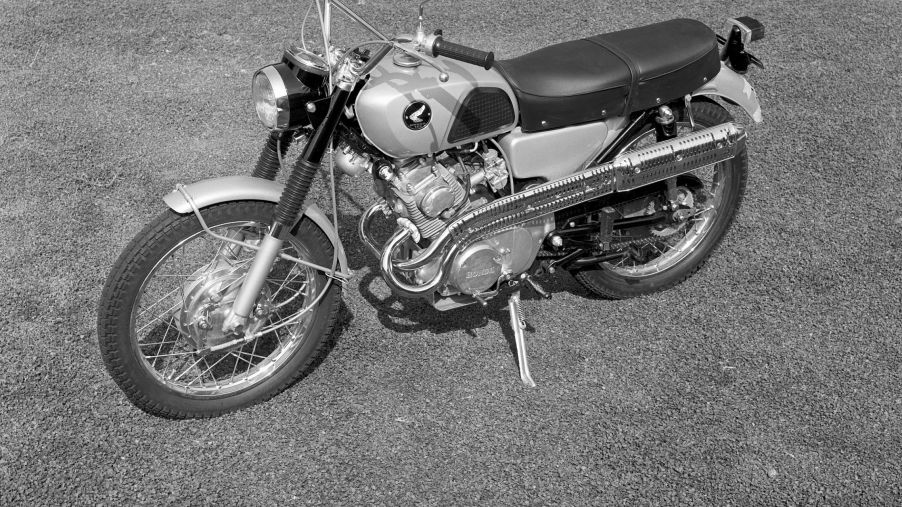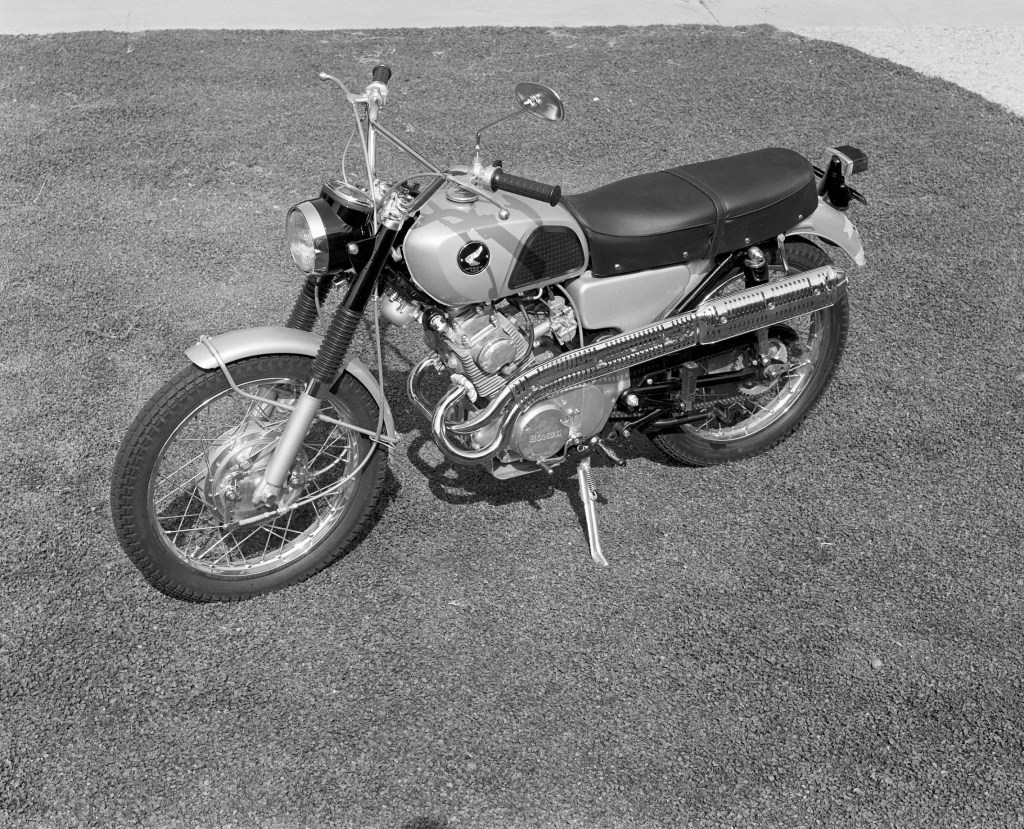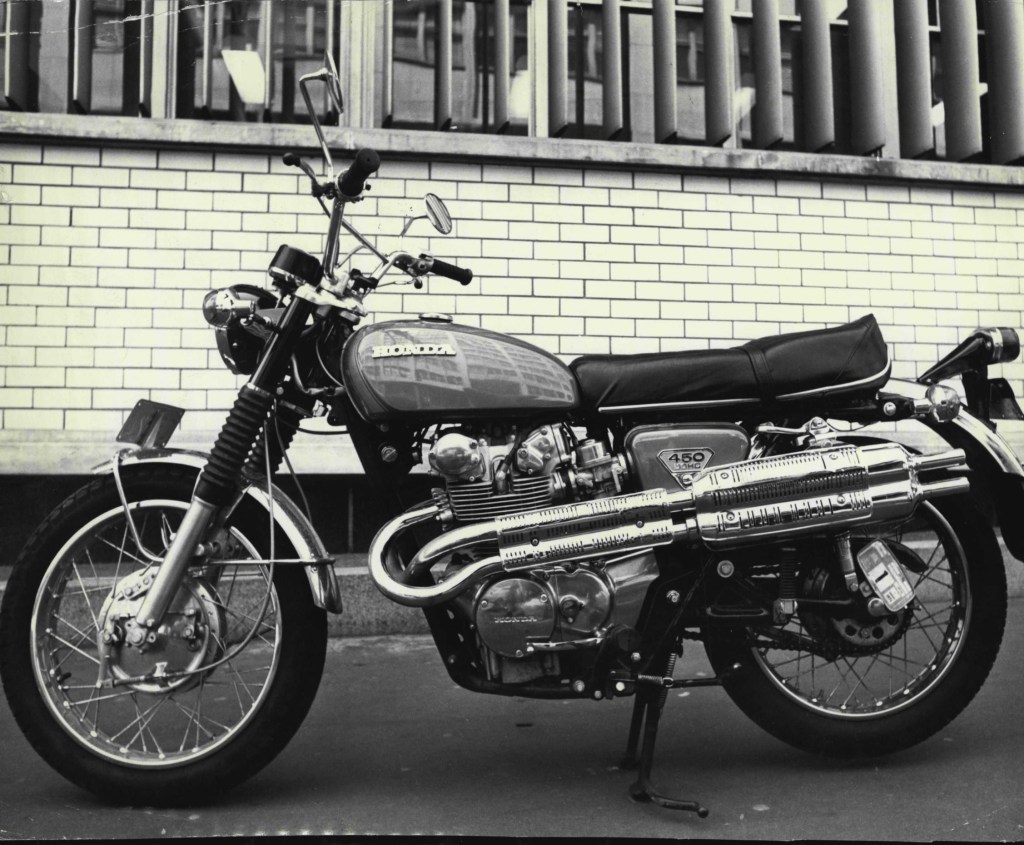
A Honda CL Scrambler Is Cheap Classic Off-Road Motorcycle Fun
Even if you’re not planning on running in the Paris-Dakar Enduro Rally, motorcycles that bridge the on- and off-road world are hugely popular these days. And not just brand-new bikes, but their classic predecessors as well. Case in point, vintage Honda Trails now often sell for more than a new Trail 125. But they aren’t the only classic Honda motorcycles that can freely transition between dirt and pavement. If you want affordable vintage off-road fun, you might want to shop around for a Honda CL Scrambler.
Before there were dual-sports or Africa Twins, Honda had the CL Scrambler range

| Spec | 1962-1975 Honda CL Scrambler |
| Models | CL50 (1967-1971) CL70 (1969-1973) CL72 (1962-1965) CL77 (1965-1968) CL90 (1967-1969) CL100 (1970-1973) CL125 (1967-1974) CL160 (1966) CL175 (1968-1973) CL200 (1974) CL350 (1968-1973) CL360 (1974-1975) CL450 (1968-1974) |
| Engine | CL50: 49cc air-cooled single-cylinder CL70: 72cc air-cooled single-cylinder CL72: 247cc air-cooled parallel-twin CL77: 305cc air-cooled parallel-twin CL90: 90cc air-cooled single-cylinder CL100: 100cc air-cooled single-cylinder CL125: 125cc air-cooled parallel-twin (1967-1969), 122cc air-cooled single-cylinder (1970-1974) CL160: 161cc air-cooled parallel-twin CL175: 174cc air-cooled parallel-twin CL200: 198cc air-cooled parallel-twin CL350: 325cc air-cooled parallel-twin CL360: 356cc air-cooled parallel-twin CL450: 444cc air-cooled parallel-twin |
| Power | CL50: 5 hp CL70: 5 hp CL72: 24 hp (Hagerty) CL77: 27 hp (Cycle World) CL90: 8 hp (Motorcycle Classics) CL100: 12 hp CL125: 13 hp CL160: 17 hp CL175: 20 hp CL200: 17 hp CL350: 33 hp (Rider) CL360: 34 hp CL450: 45 hp (Motorcycle Classics) |
| Transmission | CL175, CL200, and CL450: Five-speed manual All others: Four-speed manual |
| Dry weight range | CL50: 152 lbs CL450: 401 lbs |
Today, if you want a street-legal dirt bike, you go get a dual-sport. In the early 1960s, though, dirt bikes didn’t really exist, Cycle World explains. And adventure bikes like the Africa Twin were almost two decades away. But there were scrambler motorcycles, street bikes converted to work off-road via things like knobby tires and longer-travel suspension.
However, even though a few companies like Triumph offered accessories to turn a street motorcycle into a scrambler, you couldn’t get one from the factory. And that gave Honda, which, like many Japanese motorcycle companies, was on the rise, an idea.
With the CA72 Dream as a base, Honda reinforced the chassis. That meant ditching the electric starter and going kickstarter-only. But in return, the bike also got a skid plate and a high-mount exhaust for extra ground clearance. And the friction steering damper was replaced with a hydraulic one, Rider reports. The result was the 1962 Honda CL72 Scrambler.
Regardless of capacity, a Honda CL Scrambler is a solid classic off-road motorcycle
Lacking off-road-rated tires and with only 3-4” of suspension travel, the Honda CL72 isn’t technically a scrambler motorcycle, Cycle World muses. It’s more of a well-modified street bike. However, its successors were ‘genuine’ articles, with extra suspension travel and off-road tires.
Yet even the Honda CL72 Scrambler is no mere styling exercise when it comes time to hit the dirt. In 1962, famed racer Bud Ekins rode a pre-production CL72 from Tijuana to La Paz with a Honda representative. Not only did it prove that the new Honda scrambler was tough enough to survive, but this trip became the basis for today’s Baja 1000. And, incidentally, the Honda CL350 Scrambler won the 1968 Baja 1000 race, beating the previous year’s record by over five hours.

Admittedly, getting these classic Honda scrambler motorcycles into race-ready condition often required adjusting and upgrading the suspension, Hagerty reports. Remember, these CLs are derived from street machines, not dedicated off-roaders. Plus, even after Honda gave other bikes disc brakes, the CLs stuck with drums.
However, as its light and agile, a Honda CL Scrambler is a great learning tool on and off paved surfaces. Unlike with larger-capacity motorcycles, you can’t just power your way out of situations on these scramblers. As a result, you develop better riding habits. And because they’re so simple, they’re easy to maintain. That’s why they were so popular, Motorcycle Classics explains, and why they’re becoming popular again.
With a few exceptions, these vintage bikes are still fairly cheap
Because Honda made so many of these scrambler motorcycles, for a while these were just old bikes. These days, though, they’re becoming collectible classics, especially the CL72, CL77, and CL450. However, even pristine examples are still relatively affordable.
Those three models notwithstanding, you can get an excellent-condition classic Honda CL Scrambler for $4000-$7000, Hagerty says. And even the most expensive CL450 or CL77 usually doesn’t cost more than $11,000. Admittedly, even one of the cheaper CLs often costs more than a brand-new Honda Trail 125 ABS.
But then, having fun in the dirt on a vintage bike isn’t really about fiscal logic.
Follow more updates from MotorBiscuit on our Facebook page.


